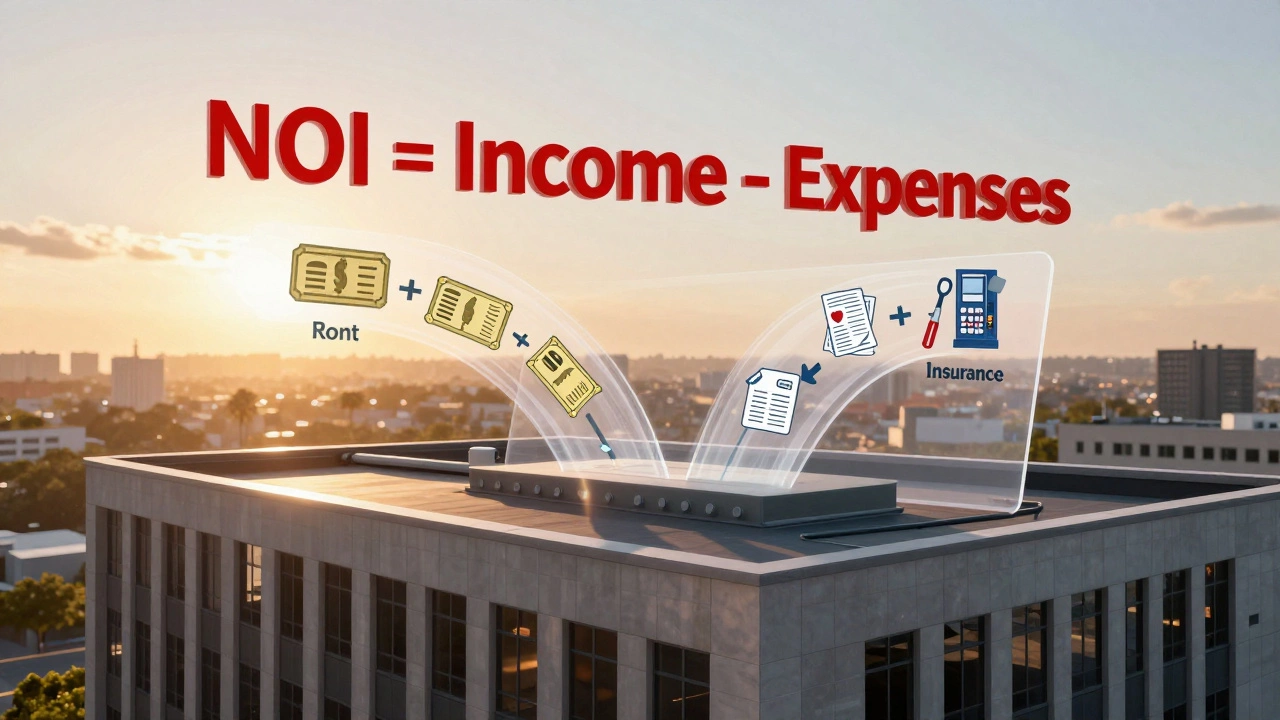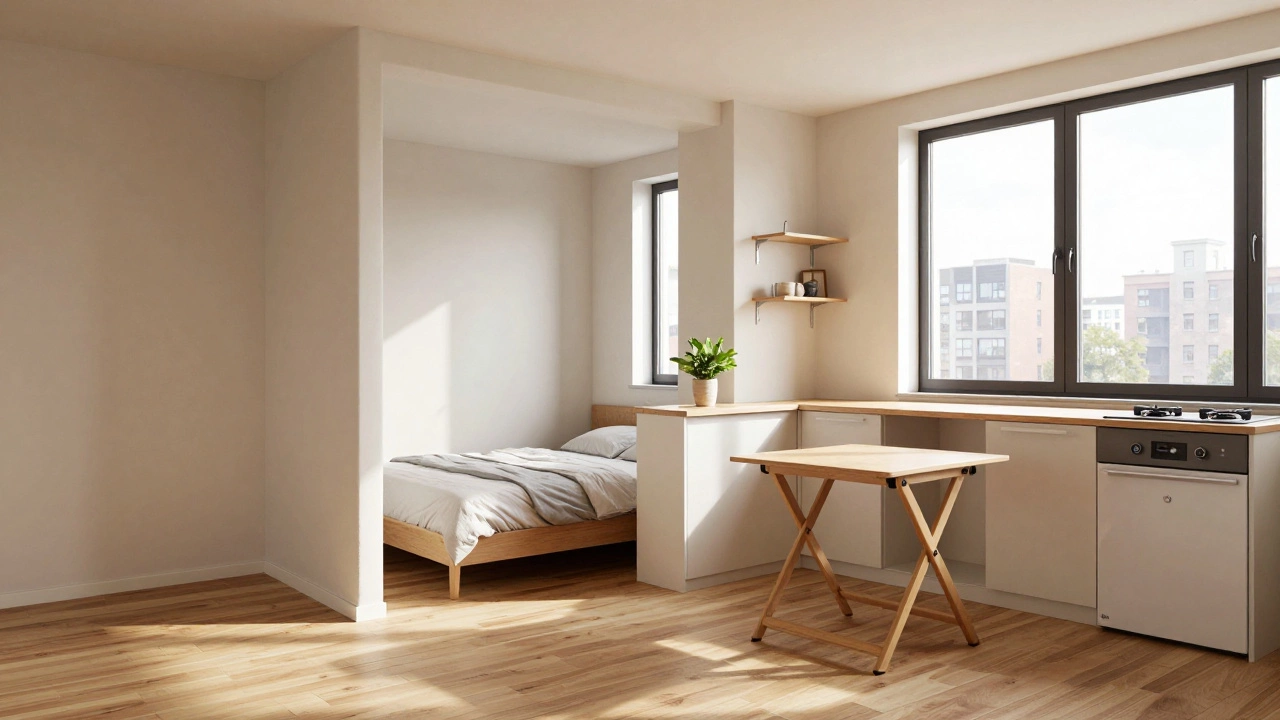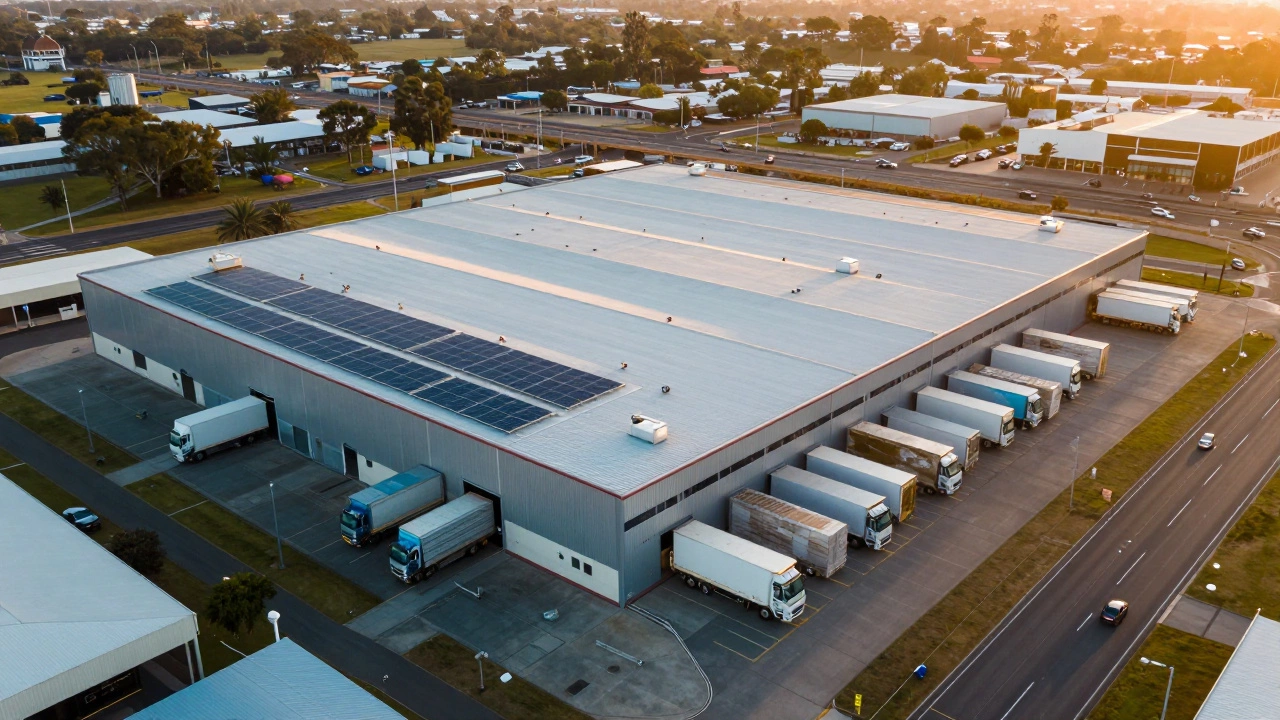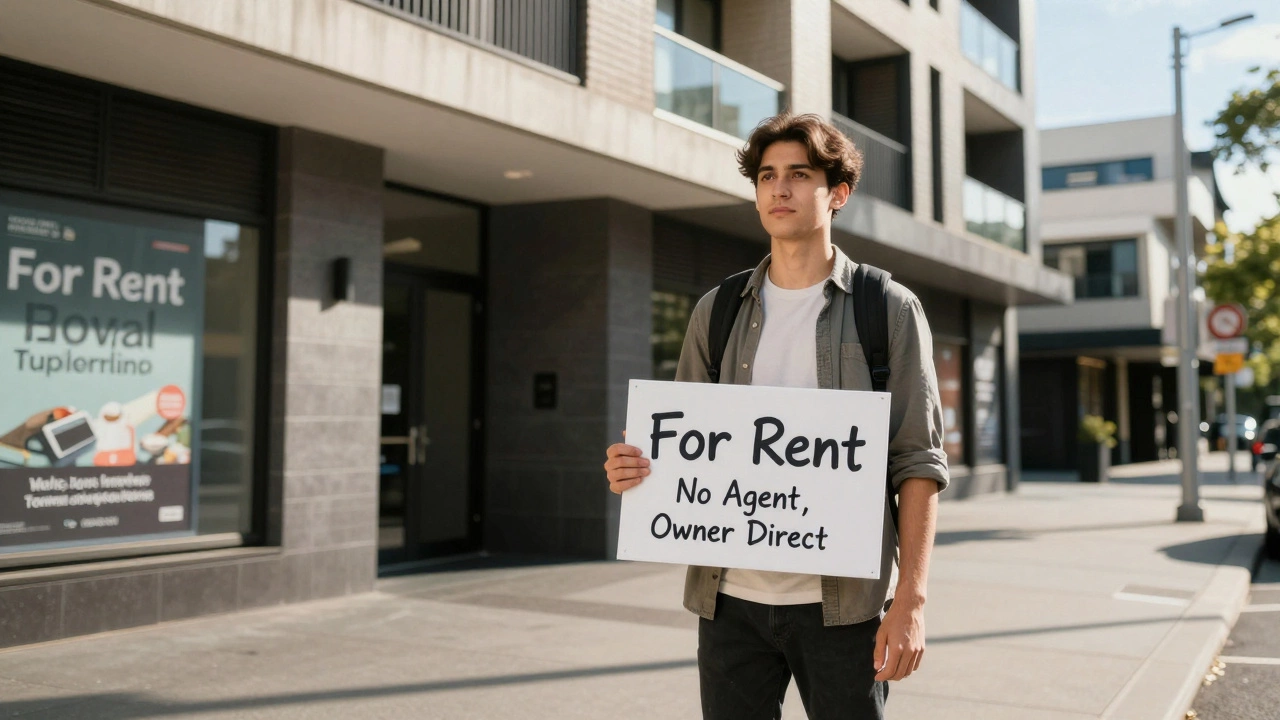So, you're thinking about buying a property online with hopes to turn it into a rental gem. Naturally, the big question pops up: how much profit should you make? Understanding your bottom line is key. You want to make sure you're not just covering your mortgage and throwing in a bit for coffee. There's more to it.
First things first, let's chat about the concept of cash flow. Essentially, you're looking at the difference between what you earn from rent and what you have to shell out in expenses. Most folks in the know suggest aiming for a cash flow that gives you around 6-8% return annually. Sounds sensible, right?
Now, there's this nifty rule in the property world called the 1% rule. Heard of it? Basically, your rental income should be at least 1% of the purchase price each month. If your property costs 300 grand, you're hoping to snag around 3 grand in rent monthly. It's not always feasible, especially in pricier areas, but it’s a good benchmark to keep in mind when hunting for properties online.
- Understanding Rental Profit Basics
- The 1% Rule Explained
- Calculating Your Expenses
- Maximizing Your Rental Income
- Evaluating Long-Term Gains
Understanding Rental Profit Basics
Alright, let's untangle what's really happening with rental property profit. It’s not just about finding tenants and collecting rent. You've got to understand what goes in, what comes out, and what's left for you at the end. It sounds simple but requires some savvy number-crunching.
To get started, think of rental income as your monthly paycheck. But before you mentally cash it, remember there's more on the bill list than the mortgage.
- Operating Expenses: Maintenance, insurance, property management fees, and maybe even a little set aside for when the hot water tank decides to go on strike.
- Property Taxes: They aren’t a once-a-year thing; they’re more of a silent partner in your monthly costs.
- Vacancy Costs: Properties aren’t always fully occupied. When they’re not, that’s money out, not money in.
After you’ve worked through those, what's left is your actual profit, also known as cash flow. And here's a nifty guide: pros often suggest a positive cash flow from day one, meaning you're not dipping into savings just to keep the place ticking.
Another useful way to evaluate profit is by looking at the capitalization rate, or cap rate. It’s a method where you use the annual net profit and divide it by the property’s price. A cap rate of around 5-10% is typically considered healthy, but like any rule, location plays a major part. Coastal city or middle of the outback?
| Factor | Range |
|---|---|
| Cap Rate | 5-10% |
| Net Yield | 4-6% |
So why break this down? Because understanding these basics means you're not just winging it; you're paving a path to smart investing that maximizes not just your rental income but the satisfaction of watching that bank account grow.
The 1% Rule Explained
Alright, let's dig into the famous 1% rule, a handy guideline in the world of rental properties. It's kind of like having a compass when you're navigating property investment. The idea is pretty straightforward: make sure the monthly rent you collect equals or exceeds 1% of the property's purchase price.
For example, if you buy a property for $250,000, this rule suggests you should aim for a rental income of at least $2,500 per month. This helps ensure that you're covering costs and starting to see some of that sweet, sweet profit. Now, bear in mind this is just a rule of thumb. Markets vary, and sometimes it can be tricky, especially in upscale locations or during market highs.
Why the fuss about this rule? Well, it forces you to think about the rental income potential right from the start. It can save you from falling for a property that seems like a dream but might end up being a financial drain.
However, remember it’s not all about the purchase price and rent. You must account for all those sneaky expenses like taxes, insurance, maintenance, and vacancy rates. If your rental income is barely clearing the 1% mark, these costs can eat into your profit quicker than you’d like.
While the 1% rule is a nifty tool, it's not gospel. Some investors prefer the 2% rule for a bigger cushion, while others might settle for 0.5% if the property is in a high-demand area. The main takeaway? Use it as a guide, not a hard and fast rule, and always run the detailed numbers to make sure the investment aligns with your financial goals.

Calculating Your Expenses
Alright, let's jump into something crucial for your rental property adventure—calculating your expenses. Trust me, this isn't the time to wing it; knowing these numbers can save you a heap of stress down the line.
First up, we’ve got the obvious one: the mortgage. This is usually your biggest monthly cost and will largely depend on how much you forked over for the property. But don't forget, there's more lurking around the corner.
Property taxes are next. They can vary significantly depending on where you’re buying. Double-check with local guidelines to get the exact pinch on your wallet. And then there’s insurance—landlord insurance to be specific. It’s a tad more expensive than the regular homeowner’s deal but absolutely worth it for that extra peace of mind.
Next, consider maintenance and repairs. Your property will need some TLC, whether it's fixing a leaky tap or repainting every few years. A safe bet is to set aside about 1-2% of the property value annually for these little hiccups.
Oh, and don’t forget about vacancies. It’s not all roses; sometimes you might end up with gaps between tenants. A wise move is to factor in a month or two of lost rent each year into your budget.
If you’re hiring a property manager, their fee usually clocks in around 8-12% of your monthly rental income. It’s super handy if you’re not up for dealing with tenants directly, but it’s another slice out of your earnings.
- Mortgage - Principal and interest payments.
- Property Taxes - Annual taxes based on property value.
- Insurance - Landlord insurance for that extra protection.
- Maintenance and Repairs - Budget 1-2% of property value yearly.
- Vacancies - Account for potential unrented months.
- Property Management Fees - Around 8-12% if you use a manager.
Here's something cool—a quick example to visualize things. Let's say your property is valued at $400,000. According to a generic breakdown, you might expect expenses like this:
| Expense Type | Estimated Annual Cost ($) |
|---|---|
| Mortgage | 18,000 |
| Property Taxes | 4,500 |
| Insurance | 1,200 |
| Maintenance | 4,000 |
| Vacancies | 3,000 |
| Management Fees | 5,000 |
Putting it all together, keeping a detailed record of these expenses gives you a clearer, more positive outlook on your rental property profit. It’s not just about collecting rent; it's about making savvy decisions by knowing where every dollar goes.
Maximizing Your Rental Income
So, you’ve got your property and it's time to make it sing. Getting the most out of your rental property profit involves a bit of creativity and a touch of strategy. It’s not rocket science, but there are definitely some smart moves you can make.
First up, consider the presentation of your place. A fresh coat of paint, modern fixtures, and a little landscaping can turn heads. Renters love a space that feels new, even if it’s not. Think of it like spiffing up before a big date—first impressions count!
Next, pricing your rental correctly is crucial. Check out property investment tips and compare your place’s features with similar properties online. Staying competitive is key, but don't sell yourself short. Price too low, and you're leaving money on the table. Too high, and good tenants might pass by.
Offering perks like utilities included or super-fast internet can also be a game-changer in attracting long-term tenants. If your rental's in a pet-friendly area, allowing pets could also bring in more interest—and income—since many landlords don't allow them.
Think about seasonal pricing adjustments too. In areas prone to student influxes or holiday tourists, demand can vary throughout the year. Adjusting your rates accordingly can help you capture more rental income.
And let’s not forget tenant screening! Good tenants pay on time and treat your property well. Maintaining positive relationships can encourage them to stay longer, reducing turnover and the costs associated with it.
If you're interested in some stats, here’s a quick peek:
| Strategy | Potential Increase in Income |
|---|---|
| Minor Renovations | 10-15% more monthly |
| Competitive Pricing | 5-8% more occupancy rate |
| Offering Incentives | 5-10% tenant interest boost |
Maximizing profit is about making wise choices. It’s simple things that can lead to significant returns and make your investment feel worthwhile.

Evaluating Long-Term Gains
Alright, you've got a rental property rolling—nice work! But remember, the real magic in property investment often happens over the long haul. We're talking years down the line when you start to really see those gains stacking up. It’s not just about monthly rental income; it's about the steady increase in property value and the equity you build over time.
Let's get into some specifics. One aspect you’ll want to focus on is property appreciation. On average, property values in many areas go up by 3-5% each year. Of course, this can vary depending on the location and market conditions, but over a couple of decades, this can seriously boost your property’s worth.
Next, as you're paying off your mortgage, you're building equity. This is the part of the property you actually own, and each mortgage payment increases your share. It's like a savings plan with some real heft!
There's also the potential for rental rate increases. If you're doing things right—in a strong market and maintaining your property well—you should be able to bump up those rents a little bit every year, pure profit after covering costs.
Here’s a quick look at how these factors can play out over time:
| Year | Property Value Increase (%) | Equity Built (%) | Potential Rent Increase (%) |
|---|---|---|---|
| 1 | 3 | 15 | 2 |
| 5 | 15 | 30 | 10 |
| 10 | 30 | 50 | 20 |
Finally, think about tax benefits. A lot of property owners don’t fully take advantage of this, but depreciation deductions can be a sweet deal. Plus, some regions offer incentives or rebates, especially if you're investing in growth areas or going green with your property.
To make the most out of your rental property profit, you’ve got to play the long game. Stay informed about the market, keep on top of property maintenance, and always look for ways to increase value. Before long, you’ll see why folks say property investment is as much about patience as it is about anything else.





